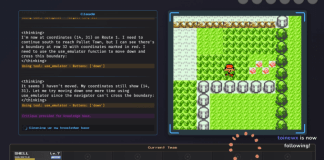Although he was born 2,000 miles from Austin in Tacoma, Wash., artist Taylor Rushing has emerged as a prominent cultural ambassador for the Texas capital. If you spotted anyone carrying around this year’s SXSW tote bag sporting an armadillo giving a peace sign, then you’ve seen Rushing’s work, which also includes art for Willie Nelson, Bob Dylan, The Rolling Stones, and Austin City Limits. Defying those who might pigeonhole New Austin, Rushing proves that the city still has fearless champions of an ethos that stretches back to the cosmic cowboy era.
Who were some of the earliest adults that encouraged your art?
My parents are both creative, so I was really lucky. My mom, when I was a kid, built bird houses. They really encouraged making stuff in every form, whether it was hunk of wood or on a piece of paper. Making something out of nothing was a big part of my learning. I grew up in Puget Sound in the ’90s, so it was a very peak time to be funky. My mom also sold antiques during that time, so we would go to estate sales every weekend, and junk dealing people are the greatest, most fascinating semi-criminal characters you’ll ever meet. I saw a lot of independent entrepreneurs and creatives function successfully in scrappy kind of ways. I was never afraid to have a hustle.
Does Austin have a particularly rich poster culture compared to other major cities?
Poster culture in Austin comes from the connection of Austin and San Francisco. Chet Helms, who was Big Brother and the Holding Company’s manager, started The Family Dog in San Francisco, one of the first venues to have psychedelic posters. Chet [who was originally from Texas and attended UT] turned on all these Texas hippies to these great poster artists. Jim [Franklin] lived upstairs at the Vulcan Gas Company, and Jim spent a lot of time in San Francisco.
What were your first impressions of Austin?
We drove down South Congress, and an armadillo ran across the street. We went to the old St. Vincent de Paul that was next to Continental Club, and it was filled with reject Willie tour shirts and pearl snaps and Stetson hats. I remember going to the White Horse and getting my mind exploded. And we went to the Spoke and saw Dale Watson. I remember Dale standing at the door shaking everybody’s hand on the way out and just thinking: This is it. This is as pure it as it gets.
How influential was poster artist Jim Franklin’s work for you?
He is a golden light for me. I look at Jim’s work probably every day. His dedication to his craft is undeniable, especially back then, when everything was hand-drawn and laid out. It took a lot more to make a poster in the ’70s than it does now.
What are the hallmarks of an Austin poster?
A great Austin poster is a thoughtful hand lettering, a dense illustration, and usually one or two colors. The Austin posters don’t have a ton of color because they just didn’t have the budgets. People point to the portraiture as a major Austin thing. You don’t see a lot of portrait work in psychedelic poster art.
Your art fits in a broader culture that incorporates music and apparel and a general lifestyle. What are the invisible threads that tie these things together?
We’re talking about a culture that grew out of counterculture, ultimately. A culture that grew out of self-
reliance, individualism, creative identity. Those threads are still very apparent in Austin. There is a beauty in counterculture in the South, because it was an extra act of resilience to have long hair or to smoke pot or to draw pictures or play guitar. It was not nearly the safe place that San Francisco and New York were. You had to be extra tough down here to be a hippie.
What has it meant to you to work on art for Austin City Limits, an institution that’s so integral to the city’s identity?
To work for the show is an unbelievable privilege. The first one I did was Chris Stapleton, which was freaking sick. Chris stands for everything that country music has left in it. It was just totally a no brainer when they reached out.
What are some of the challenges facing artists today, especially with regard to technology?
The biggest challenge is AI-generated “art.” I’m putting that in quotation marks here. It is derivative of real art. In my eyes, it’s theft. And I think that anyone who uses AI for financial purposes is stealing. I think it’s criminal. AI is supposed to be the thing that allows us more time to enjoy the fun parts of life. And to me, the fun parts of life are sitting down and drawing pictures.
Where’s the coolest place your art has ever taken you?
Luck Reunion is a special, thoughtful experience. Last year, I was standing right there when Willie got his tintype taken with Kermit the Frog, and that will be burned into my memory hole forever. I’ll probably get to go to Newport [Folk Festival] this year, and that is unbelievably cool. I did all the main art this year, all the lettering. I got to go to Ojai, California, on a trip for a client that I absolutely loved. Plus, just getting to see some of my dream artists as part of the inner circle.
This interview has been edited for clarity and length.
Great Job Bryan C. Parker & the Team @ Austin Monthly Magazine Source link for sharing this story.





